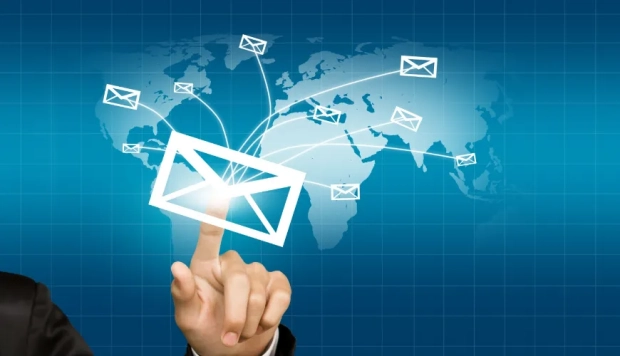Email Delivery Monitoring

Email Deliverability Monitoring serves as a crucial mechanism ensuring that the emails you send actually reach their intended recipients' inboxes. Think of it as the gatekeeper for your emails – making sure they successfully pass through the gates and arrive at the doorstep of the person you want to communicate with.
Email Deliverability Monitoring involves keeping a close eye on various factors that influence whether your emails land in the inbox or, unfortunately, end up in the dreaded spam folder. The key here is understanding the journey of your email from the moment you hit "send" to when it reaches the recipient.
Imagine you're sending a letter: you want to make sure it not only gets sent but also safely arrives at the correct address. Similarly, Email Deliverability Monitoring ensures that your emails don't get lost or blocked along the way.
This process involves assessing your "sender reputation," which is like your digital credibility score. Just as good behavior builds trust in real life, maintaining a positive sender reputation involves sending relevant, wanted emails and avoiding spammy practices.
So, in essence, Email Deliverability Monitoring is like having a trustworthy mail carrier for your digital messages, ensuring they successfully navigate the complex web of the internet and reach the recipient's inbox without any detours or hiccups.
Importance of Email Deliverability for Individuals and Businesses
Understanding the Importance of Email Deliverability for Individuals and Businesses:
Effective Communication
- For Individuals: Imagine eagerly waiting for an important email, maybe about school updates, event invitations, or communication with friends. Email deliverability ensures that these messages reach your inbox promptly.
- For Businesses: Reliable email delivery is essential for businesses to communicate with customers, partners, and employees. It ensures that crucial information, such as order confirmations, updates, and newsletters, reaches the intended audience without disruptions.
Building Trust
- For Individuals: Trust is vital in personal relationships. Email deliverability ensures that the emails you receive are genuine, fostering trust in your digital communication.
- For Businesses: Trust is the cornerstone of any successful business relationship. When customers receive emails consistently and reliably, it builds trust in the brand, leading to stronger customer loyalty.
Avoiding Miscommunication
- For Individuals: Missing important emails due to poor deliverability can lead to misunderstandings, missed opportunities, or even frustration.
- For Businesses: Miscommunication can have severe consequences in a business setting. Reliable email delivery is crucial for timely responses, collaboration, and maintaining a positive brand image.
Marketing Success
- For Individuals: Email is not just about personal communication. Subscribing to newsletters or updates ensures you stay informed about your interests, hobbies, and favorite brands.
- For Businesses: Email marketing is a powerful tool for businesses to connect with their audience. High deliverability rates mean that marketing emails, promotions, and announcements have a better chance of reaching the target audience and generating positive results.
Cost-Efficiency
- For Individuals: Reliable email delivery saves you from potential headaches and frustrations caused by lost or delayed emails.
- For Businesses: Efficient email delivery means that businesses get the most out of their email marketing efforts, reducing the risk of wasted resources on campaigns that don't reach their intended audience.
Whether you're an individual staying connected with friends or a business fostering customer relationships, the importance of email deliverability lies in ensuring effective communication, building trust, avoiding miscommunication, achieving marketing success, and maintaining cost-efficiency in the digital realm.
So What is Email Deliverability?
Email deliverability refers to the ability of an email message to successfully reach the recipient's inbox without being diverted to the spam folder or, worse, being blocked entirely. Essentially, it's a measure of how effectively an email can navigate its way through the complex landscape of the internet and email systems to land in the intended recipient's inbox.
Think of email deliverability as the journey of a letter from your mailbox to your friend's mailbox. The goal is for the letter to reach its destination without getting lost, damaged, or intercepted. Similarly, email deliverability ensures that your digital messages successfully traverse the internet and reach the recipient's inbox as intended.
Factors Affecting Email Deliverability:
Sender Reputation
Just like your reputation in school reflects how trustworthy and reliable you are, email senders have a digital reputation. If you consistently send relevant and wanted emails, your sender reputation improves. On the other hand, engaging in spammy practices, such as sending unsolicited emails or using misleading subject lines, can harm your sender's reputation.
Content Quality
The content of your email matters. If it's well-crafted, relevant, and doesn't contain suspicious elements, it's more likely to pass through spam filters. Imagine writing a letter – if it's clear, friendly, and not filled with confusing or suspicious language, it's more likely to be well-received.
Engagement Metrics
How recipients interact with your emails matters. If people regularly open, click, and engage with your emails, it signals to email providers that your content is valuable. On the flip side, if recipients consistently ignore or mark your emails as spam, it can negatively impact deliverability.
Authentication Protocols
Just as you have a way to verify your identity (like a school ID), emails use authentication protocols like SPF (Sender Policy Framework) and DKIM (DomainKeys Identified Mail) to prove they're legitimate. Properly configuring these protocols enhances the chances of successful email delivery.
List Quality
Maintaining a clean and updated list of email recipients is crucial. If you're sending emails to invalid or outdated addresses, it can trigger spam filters. Think of it as making sure you have the correct addresses for your friends before sending them invitations to an event.
Understanding these factors is like learning the rules of the road for successful email delivery. By adhering to best practices and considering these elements, individuals and businesses can enhance their email deliverability, ensuring that their messages reliably reach the intended audience.
Importance of Verifying Email Addresses
Imagine you're sending out invitations to a party. You want to make sure your friends receive them, right? In the digital world, verifying email addresses is like double-checking that you have the correct addresses before hitting "send." It's a crucial step for both individuals and businesses for several reasons:
Preventing Bounces: When you send an email to an invalid or non-existent address, it "bounces" back, indicating delivery failure. Verifying email addresses helps prevent these bounces, ensuring your messages reach actual recipients.
Enhancing Deliverability: Verified email addresses contribute to better deliverability. Email providers favor senders with clean lists and are more likely to route their emails to the inbox rather than marking them as spam.
Maintaining Sender Reputation: Regularly verifying email addresses is a proactive measure to maintain a positive sender reputation. It shows that you're sending emails to engaged and valid recipients, boosting your digital credibility.
How Email Verification Works
Email verification is akin to managing a guest list for a party – ensuring only invited friends attend. The process involves checking the validity of email addresses before sending messages. This typically includes a syntax check to ensure correct email format, domain verification to confirm domain existence and proper DNS records, MX record check to ensure the recipient's email server is set up to receive emails, and role-based address detection to identify generic, non-individual addresses like "info@company.com." These steps collectively ensure that emails are sent to valid and authentic recipients, contributing to successful communication and maintaining a positive sender reputation.
Benefits of Using an Email Checker
Using an email checker, especially for businesses or individuals managing large email lists, comes with several advantages:
Cost Savings - preventing bounces and ensuring accurate delivery reduces wasted resources on unsuccessful email deliveries, Time Efficiency - manual verification is time-consuming. Email checkers automate the process, providing quick and accurate results, Improved Campaign Performance - by sending emails only to valid and engaged recipients, your campaigns are more likely to succeed, leading to better overall performance, Enhanced Data Quality - maintaining a clean and accurate email list contributes to better data quality, which is crucial for effective communication and marketing efforts.
Email verification is like having a meticulous bouncer at the entrance of your digital party, ensuring only valid and invited guests make it to the inbox. It's a proactive step that contributes to successful communication and helps maintain a positive sender reputation.
Importance of Testing Email Deliverability
Testing email deliverability is a critical step in ensuring the effectiveness of your email campaigns and maintaining a robust communication strategy. Imagine preparing a batch of invitations for your party – you want to be certain that each invitation reaches its intended recipient's mailbox without any issues.
Similarly, testing email deliverability ensures that your messages not only avoid spam filters but also land in the inbox, enhancing the likelihood of engagement. It serves as a proactive measure to identify and address potential obstacles that may hinder the successful delivery of your emails, ultimately optimizing the impact of your communication efforts.
Common Challenges in Email Deliverability
Several challenges can impact the deliverability of emails, making testing essential. One common hurdle is spam filters, which are designed to protect users from unwanted or malicious emails but can sometimes misclassify legitimate messages. Issues like poor sender reputation, inaccurate subscriber lists, or improperly configured authentication protocols can contribute to emails being marked as spam or not reaching the inbox.
Testing helps uncover and address these challenges, allowing senders to fine-tune their strategies and overcome obstacles that may hinder the seamless delivery of their messages.
Tools and Methods for Testing
Fortunately, there are various tools and methods available to test and optimize email deliverability. These tools often provide insights into how emails perform across different email clients, identify potential deliverability issues, and offer actionable recommendations for improvement. Inbox placement testing, spam filter testing, and engagement tracking are some common methods employed to assess deliverability.
Additionally, monitoring sender reputation, regularly updating subscriber lists, and ensuring proper authentication through SPF and DKIM can significantly enhance email deliverability. By leveraging these tools and methods, individuals and businesses can proactively address challenges, refine their email strategies, and ultimately ensure that their messages reach the intended audience effectively.
Ensuring Successful Email Campaigns
In the realm of digital communication, ensuring the success of email campaigns requires a strategic combination of factors, with a focus on improving email deliverability, implementing effective email verification practices, and recognizing the symbiotic relationship between the two.
Tips for Improving Email Deliverability
One key aspect is to maintain a positive sender reputation, comparable to how one would uphold a good reputation in a community. Consistently delivering relevant, wanted content and avoiding spammy practices contributes to a favorable sender reputation.
Crafting engaging subject lines and compelling content encourages recipients to open and interact with emails, sending positive signals to email providers. Regularly monitoring engagement metrics, such as open and click-through rates, allows for timely adjustments to optimize deliverability.
Best Practices for Email Verification
To build upon successful campaigns, employing best practices for email verification is crucial. This involves periodically validating email addresses in your lists to ensure accuracy and relevance. Think of it as cleaning your guest list before a big event – you want to make sure you're sending invitations to valid addresses. Implementing syntax checks, domain verification, and other verification steps, as discussed earlier, helps in maintaining a clean and reliable email list.
How Email Verification Contributes to Successful Campaigns
Email verification plays a pivotal role in the success of campaigns by acting as a gatekeeper for the quality of the recipient list. Sending emails to valid and engaged recipients not only reduces bounce rates but also enhances the chances of positive interactions. A verified list ensures that emails are directed to the right inboxes, avoiding the pitfalls of spam filters and potential deliverability issues.
Furthermore, it aids in building trust with recipients, as they receive content that aligns with their interests and expectations. The positive impact of email verification on deliverability creates a foundation for successful campaigns, ensuring that the time and effort invested in crafting compelling content translates into meaningful engagement.
The synergy between improving email deliverability and implementing robust email verification practices is paramount for ensuring the triumph of email campaigns. By following tips for deliverability, adhering to best practices for verification, and recognizing the interconnected nature of these processes, individuals and businesses can pave the way for successful communication and engagement with their target audience.



